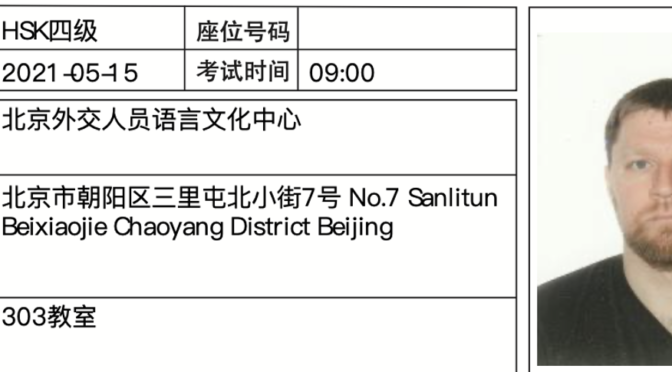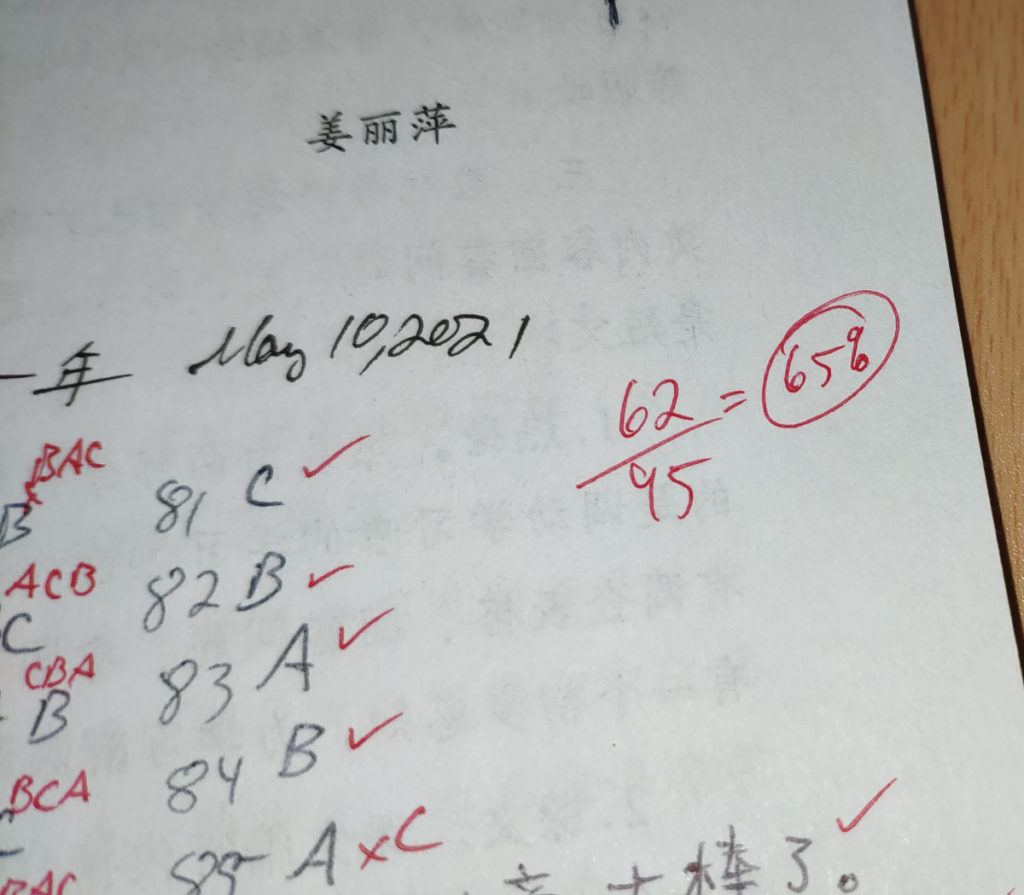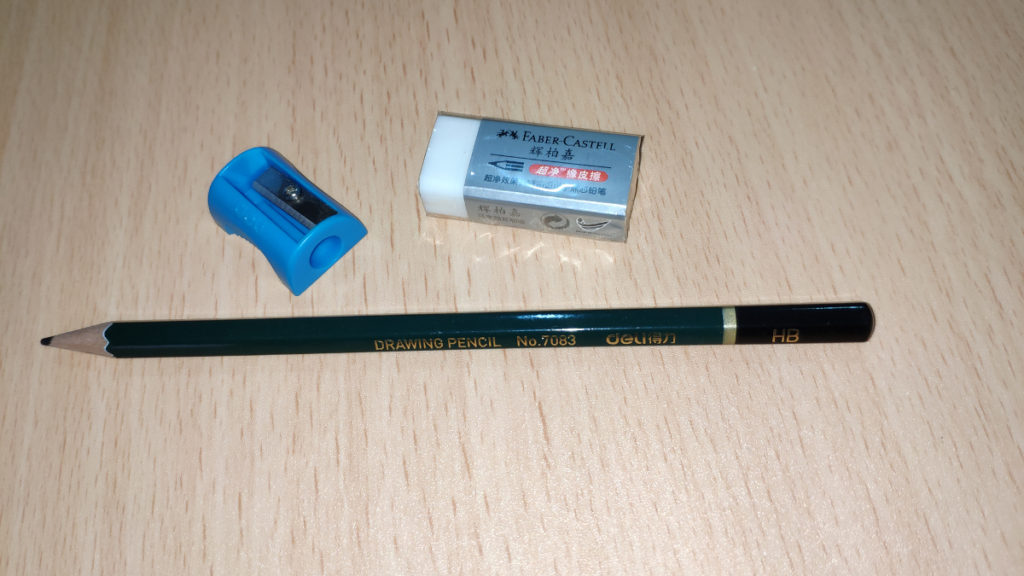It’s finally here, about a year later that I originally planned but it’s finally here. My HSK 4 test. Part of the reason for the delay was some sort of pandemic that ravaged the world over and put off a few things. Another part of the reason was that I wasn’t really ready. Oh, and the website used to register for the HSK tests can be frustrating to use at times so, if it doesn’t work, then you might miss the registration deadline.
I had originally signed up to take the test a few months ago but, since I decided to do something different this time, it was postponed another couple of months. Why a couple of months? Because I’ve decided to do the test on paper instead of on computer, the reason being that I want to try my hand (literally) at writing the Chinese characters. Penmanship will count since the markers won’t try to distinguish what you’ve written. It has to be clear and precise. If not, no mark. So that’s my challenge this time.
Given that it is just over 12 hours until my test, I sort of feel like I should be doing more than writing a blog post about the upcoming best, but what should I do? What more can I prepare? How much more can I reasonably learn in the next twelves hours that I haven’t already studied up till now?
And so, with the TV on in the background and Russian class finished for the week, I’m looking to have a pretty normal evening: read, look up stocks, walk, go to bed early. No alcohol.
Sure, I could review characters, there are a few that I can’t always remember… but then how would I remember which ones they are?
I could review grammar, but I had a class on Monday with my Chinese teacher and she was rather precise in where I was losing marks: the writing section.
One reason for the loss of marks is that you’re supposed to arrange the sentence in the right order. All parts are given, but you have to put them together in the correct order. This depends on a few things:
- the subject of the sentence
- the connection words
- the logic of the sentence
It is here that I find that a culture’s logic can also be found in its grammar structures. I wonder if it could be that grammar structures are arranged according to logic, or if grammar came first and then logic. I’m not sure. Either way, the first points stand solidly unattested. On a purely personal basis, using that methodology to analyze the given words and sentence fragments, the very next practice test I took I scored eight points higher. From 65% to 73%. That’s not bad. I only need 60% to “pass” the level.
There are a few other things I’ll keep in mind:
- 把 (ba) sentences, which has something to do with moving one thing to another place, I think. All I know is that this sentence structure is not necessary in reality but it is used a lot and it is a grammatical point to know. So I have to at least learn the structure.
- 被 (bei) sentences, in which the subject has something done to them by something else, eg, the apple was eaten by me would be 苹果被我吃完了。(The apple was (completely) eaten by me.)
- The general structure of a Chinese sentence is something along the lines of TIME STAMP + SUBJECT + VERB + OBJECT + its modifiers. If I can identify which is the subject and the verb, then I should be able to string the sentence together.
The one thing I’ve noticed that helps immensely and has a noticeable effect on my result is to translate as I go. That is, as I’m listening or reading, I’m literally translating everything into English. It helps that my listening seems to have gotten a lot better as I’m able to follow along a lot better than before. However, I’ve also noticed, that if I miss ONE WORD, then I’m lost and I often don’t know what the sentence is about. In other words, it’s an intense listening and reading exercise.
But, with any luck and any retained knowledge, this should all be over tomorrow morning 10.30 am Beijing time. I hope it is. I really want to put away my HSK 4 textbooks and their accompanying workbooks, in addition to the practice test books. This is literally six inches of paper that is doing nothing but eating away at my mental space. Hopefully, after tomorrow, I can file them away in the archives. (No, I won’t throw them away just yet as I do kind of think of them as souvenirs as a sort… which I know my family will roll their eyes at.)
So, that’s that. Tomorrow is judgment day for my Chinese studies to date. We’ll see how it goes. I’m nervous, but only because I’ve somehow managed to arrange a few other projects in and around this date so I’m trying to fit everything in while passing this test.
Wish me luck!
And, if you’re interested to see how my Chinese has evolved, you can take a look at two other musings on the language, the first is from October 2020 and the second was written just before I took my HSK 3 test in August 2019:
And let’s not forget, since this is a paper-based test, I need to bring my own pencil and eraser! I had to spend eight kuai on this!



